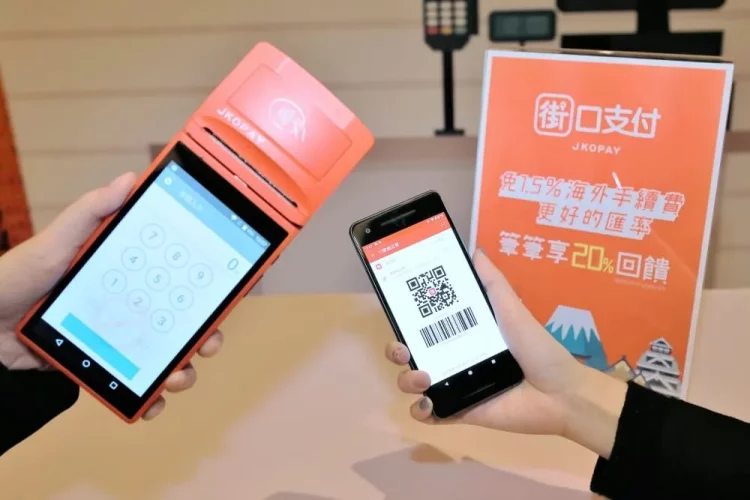In today’s globalized economy, businesses are increasingly involved in cross-border transactions, whether it’s paying suppliers, receiving payments from customers, or investing in foreign markets. Traditional payment systems, particularly for international payments, often come with high fees, long processing times, and lack of transparency. These inefficiencies are a significant pain point for businesses that need to manage international transactions quickly, cost-effectively, and securely.
Blockchain technology offers a transformative solution to optimize payment systems and reduce the time and cost associated with cross-border transactions. By enabling decentralized, transparent, and secure transfers, blockchain can eliminate many of the intermediaries and inefficiencies that plague traditional systems. In this article, we will explore how businesses can leverage blockchain to improve their payment systems, accelerate cross-border transactions, and lower transaction costs.
1. The Challenges of Traditional Cross-Border Payments
Before diving into how blockchain can help businesses, it’s important to understand the key challenges businesses face with traditional cross-border payment systems:
A. High Transaction Costs
Traditional cross-border payment methods, like wire transfers, often involve multiple intermediaries such as banks, payment providers, and clearinghouses. Each intermediary charges a fee for processing, resulting in a complicated fee structure. These fees can add up quickly, especially for businesses making frequent international transactions.
B. Slow Transaction Times
Cross-border payments through traditional banking channels can take several days to process, primarily due to the involvement of multiple intermediaries and the need to validate the transaction across different jurisdictions and time zones. This delay can hinder the speed at which businesses can complete transactions, making international trade slower and less efficient.
C. Currency Conversion and Exchange Rate Issues
When businesses make payments in foreign currencies, they often face currency conversion costs and fluctuating exchange rates. Traditional payment systems involve third parties to handle currency conversion, and the rates can be unpredictable, further increasing the total cost of a transaction.
D. Lack of Transparency
Traditional systems often lack transparency in terms of tracking where the money is at any given point during the transaction process. This lack of visibility creates uncertainty and makes it difficult for businesses to monitor and confirm the status of their payments.
2. How Blockchain Can Optimize Payment Systems
Blockchain technology addresses many of these challenges by offering a decentralized and transparent infrastructure for recording transactions. Here’s how blockchain can optimize payment systems:
A. Reduced Transaction Costs
One of the most significant advantages of blockchain is its ability to cut down on the intermediaries involved in cross-border payments. Traditional payment systems rely on banks and other financial institutions to process payments, each of which takes a fee. Blockchain, on the other hand, operates in a peer-to-peer manner, allowing businesses to send payments directly to each other without the need for intermediaries.
Blockchain-based solutions, such as cryptocurrencies and stablecoins, can significantly reduce transaction fees. By bypassing the middlemen, blockchain enables businesses to make direct payments, avoiding the bank fees, foreign exchange fees, and service charges typically associated with traditional cross-border payments.
Example:
Cryptocurrencies like Bitcoin and Ethereum are widely used for international payments, eliminating the need for costly intermediaries. Even more specialized blockchain projects, such as Ripple (XRP) and Stellar (XLM), are designed specifically for cross-border payments and offer low-cost alternatives for businesses.
B. Faster Transactions
Blockchain’s decentralized nature allows for real-time settlement of transactions, significantly reducing the time it takes to process cross-border payments. Traditional systems often involve several days of processing, especially for international payments that require currency conversion and validation through multiple banks.
With blockchain, transactions can be verified almost instantly (depending on the blockchain network), and payments can be settled in minutes or seconds, even across borders. This drastically speeds up the entire process, allowing businesses to transfer funds quickly, improve cash flow, and increase operational efficiency.
Example:
Ripple’s RippleNet offers near-instant cross-border payments with its decentralized network, which connects banks, payment providers, and businesses. Ripple’s technology can settle international payments within seconds, compared to the usual days of waiting in traditional banking systems.
C. Elimination of Currency Conversion Issues
With blockchain, cryptocurrencies and stablecoins can serve as an alternative to traditional fiat currencies, bypassing the need for currency conversion altogether. Stablecoins, such as Tether (USDT) and USD Coin (USDC), are pegged to the value of a fiat currency (like the US dollar), providing businesses with a stable medium of exchange across borders.
For businesses dealing with multiple currencies, stablecoins offer a predictable and stable solution. Instead of relying on fluctuating exchange rates or costly currency conversion services, businesses can use stablecoins to conduct cross-border transactions with minimal risk and reduced cost.
Example:
A U.S.-based business can use USDC (a stablecoin pegged to the U.S. dollar) to make a payment to a supplier in Europe, avoiding currency conversion fees and exchange rate fluctuations.
D. Increased Transparency and Traceability
Blockchain provides a transparent ledger of all transactions, which is accessible to anyone involved in the transaction. Each transaction is recorded as a block on a public ledger, providing a complete history of the transaction, including the sender, receiver, and the transaction amount. This transparency can significantly reduce the risk of fraud and disputes.
Businesses can also track their payments in real-time, giving them complete visibility into where their funds are at each stage of the transaction. This level of transparency is not available in traditional systems, where payments often pass through multiple intermediaries without the ability to easily trace their progress.
Example:
A company using blockchain for cross-border payments can view the status of a payment at every step of the transaction. Blockchain solutions like IBM’s Hyperledger provide enterprise-grade transparency, where businesses can track not only the transfer of funds but also the complete transaction history.
3. Blockchain-Based Solutions for Cross-Border Payments
Several blockchain-based payment solutions have already been developed to help businesses optimize cross-border transactions. Some of the most notable solutions include:
A. Ripple (XRP)
Ripple provides an enterprise-level solution for real-time cross-border payments. RippleNet connects financial institutions around the world, allowing businesses to send payments instantly and at a fraction of the cost of traditional banking systems. Ripple’s XRP token is designed to facilitate payments and act as a bridge currency for international transactions.
How Ripple Helps:
- Instant settlement: Payments are completed in seconds, rather than the days required by traditional banks.
- Low transaction costs: By bypassing intermediaries, Ripple reduces fees significantly.
- Transparency: RippleNet offers transparency and trackability of payments across the network.

B. Stellar (XLM)
Stellar is another blockchain-based solution designed to enable cross-border payments. Stellar is optimized for financial institutions and businesses that need to process international payments with low cost and speed.
How Stellar Helps:
- Transaction speed: Payments can be processed in 5 seconds or less.
- Global reach: Stellar connects to a wide network of payment systems, facilitating seamless international payments.
- Multi-currency support: Stellar’s platform supports multiple currencies, enabling businesses to exchange funds across borders with ease.
C. Stablecoins (e.g., USDC, Tether)
Stablecoins offer a stable alternative to traditional fiat currencies, allowing businesses to make fast, secure, and low-cost cross-border transactions without worrying about exchange rate fluctuations. Stablecoins are increasingly used in blockchain-based payment systems for global remittances and trade.
How Stablecoins Help:
- Stable value: Stablecoins are pegged to fiat currencies, minimizing the risk of value fluctuations.
- Faster transactions: Blockchain technology allows for near-instant settlement of payments.
- Lower fees: By bypassing traditional intermediaries, businesses can make payments at a fraction of the cost.
D. PayPal’s Blockchain Initiative
While PayPal is known as a traditional online payment processor, the company has been exploring the integration of blockchain technology to streamline its cross-border payment systems. PayPal has already enabled cryptocurrency transactions, allowing customers to buy, sell, and hold cryptocurrencies directly within the PayPal app.
How PayPal Helps:
- Cryptocurrency integration: PayPal is working to make blockchain-based payments more accessible to businesses and consumers.
- Global network: PayPal’s established network enables businesses to send and receive payments from virtually anywhere in the world.
- Simplified cross-border transactions: With blockchain integration, PayPal could reduce the friction in traditional cross-border payment systems.
4. The Future of Blockchain in Cross-Border Payments
The integration of blockchain into payment systems has the potential to reshape global finance. As businesses and financial institutions increasingly adopt blockchain-based payment solutions, we can expect to see:
- Wider adoption of cryptocurrencies and stablecoins for cross-border payments, allowing businesses to avoid traditional banking fees and exchange rate risks.
- Integration of blockchain with traditional banking systems, allowing businesses to use blockchain technology alongside legacy systems.
- Governments and central banks exploring central bank digital currencies (CBDCs), which could further streamline international payments while retaining control over monetary policy.
Conclusion
Blockchain technology is poised to dramatically optimize cross-border payment systems, reducing both transaction costs and processing times. By leveraging blockchain’s decentralized, transparent, and secure infrastructure, businesses can improve efficiency, increase financial inclusivity, and reduce reliance on intermediaries. Whether through the use of cryptocurrencies, stablecoins, or enterprise solutions like Ripple and Stellar, blockchain offers a powerful tool for transforming the way businesses conduct international transactions. As blockchain adoption continues to grow, it will play a pivotal role in shaping the future of global trade and finance.
















































